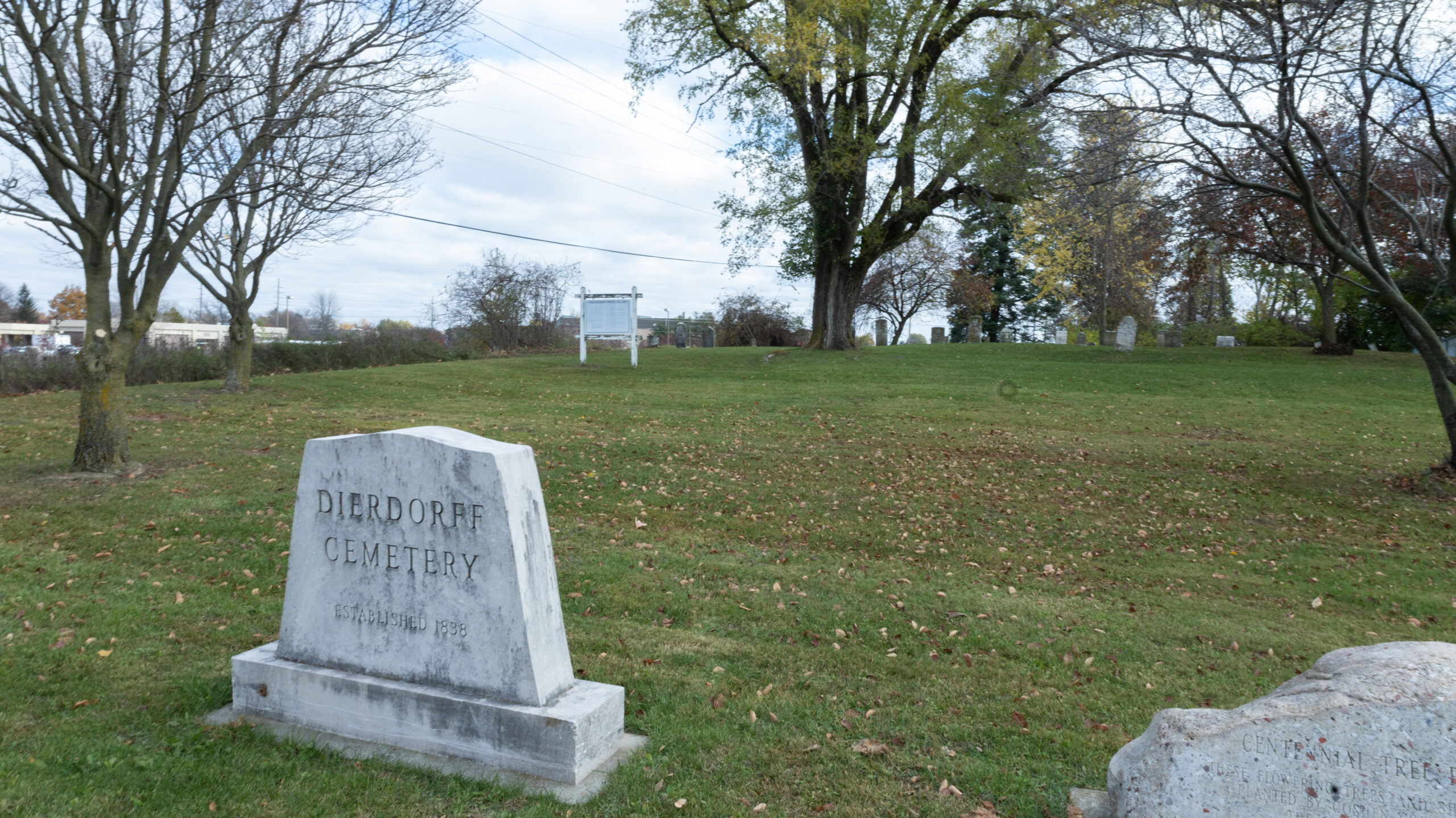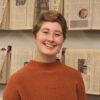It’s no secret that Goshen College is across the street from a funeral home. The building is hard to miss, and it’s not uncommon to see vehicles lined up for a procession. But there’s another connection to death next to campus: a cemetery, hidden behind the trees and tall grasses of the prairie south of Newcomer Center.
After a trip to the Goshen Historical Society, the Mennonite Historical Library and the graveyard itself, I began to get a picture of where the cemetery really came from and what it has become.This cemetery is no longer active, but houses more than 30 headstones from 1831-93. It is also possible that there are more graves that no longer have any above ground evidence and may not be included in the count. A letter written by Peter Dierdorff suggests that there are nearly “100 graves in the cemetery,” leaving around 70 graves unmarked.
These missing graves include the first body that was buried on the property, marking it as a cemetery.
As the story goes according to the records in the MHL and Goshen Historical Society, a different Peter Dierdorff, whom the cemetery is named after, made it available for public burials. His family ended up in Elkhart County after his father, Anthony Dierdorff, immigrated from the Isle of Wright in 1719 to Philadelphia.
Anthony Dierdorff was a Brethren minister who was instrumental in founding one of the first Brethren churches in the U.S.
After his son Peter grew up, he found himself neighbors with some German Baptist families, who eventually decided that it was time for them to move west. They made it to Iowa, but along the way, tragedy struck. One of their children, a young girl named Elizabeth, died while they were traveling through the land that would eventually become Elkhart County.
They found the man who owned the land and got permission to bury her there before moving on. After reaching Iowa, one of the families decided to return to Pennsylvania. When they saw Peter Dierdorff, they raved about the quality of the farmland that they had found in the prairies of Indiana.
At their recommendation, Peter and his family moved to Goshen. Once they arrived, they established their homestead near the cemetery, where Peter expanded it and built a church in front where he would pastor for approximately 30 years. He went on to be disowned by the congregation in 1865 over his firm belief that lamb, not beef, should be used at communion.
Though it was used primarily as a community cemetery, the Dierdorffs themselves claim in letters and in the cemetery’s official statement that there is a soldier from the Revolutionary War buried there. This has never been proven, though, as no one knows the name of the soldier or where he was buried, but his grave could be one that has been lost to time.
It also seems that the legend of his final resting place may have been further exaggerated in order to get preservation money from the township, as evidenced in a 1951 letter exchange between Frank Hess and Neal Whitehead.
After the Dierdorffs sold the property, control of the cemetery transferred to the Goshen Parks and Recreation department in 1976, and from there to the city’s department of cemeteries. According to their website, the official year the cemetery was established was 1854 and it wasn’t under control of the city for the first 122 years of its operation.
However, before 1976, there was not always a Dierdorff running the graveyard. The Dierdorff Cemetery Association was a fairly large organization dedicated to preserving the cemetery.
On two different occasions, the cemetery had a bank account in its name, one from 1937-50 and the second from 1951-59. Both were regularly receiving deposits for preservation that would be over $500 in today’s value and were operated by the Cemetery Association.
The Association also held something that they called a “Gala at Dierdorff Cemetery.” From the evidence available, three occurred in the years from 1938-40.
Most of what is known about the legend comes from the compilation created for the city as a recognition of Dierdorff as a pioneer cemetery. Originally, all of the information was spread by word of mouth, so there are some claims that cannot be substantiated by any physical records.
Finally, in the will of one couple who owned the land the cemetery was located on, it was stipulated that “no building or structure of any kind of nature shall be erected.” It also states that “no activity other than that of use for the purpose of beautification of said cemetery grounds … shall ever be carried on.”
Their final regulation was that “no internments shall ever be made [here] and on monuments ever erected on the same.” As of now, all of these requirements have been upheld.
Though a lot is still unknown about the Dierdorff cemetery, it is the story of a community. From the death of a young girl, to an unforgiving illness, to GC students catching a glimpse while they study bees, the graveyard is a part of life in Goshen.




